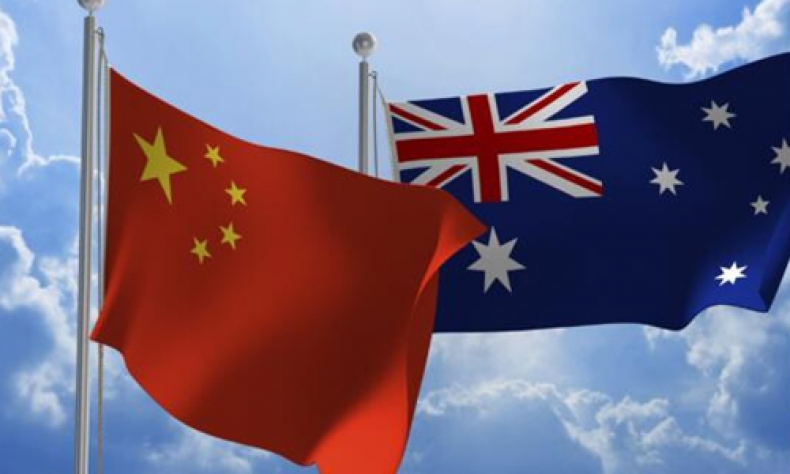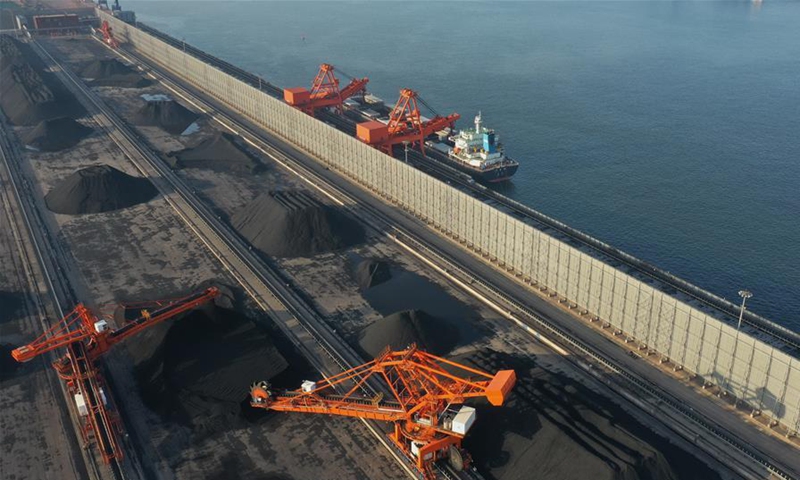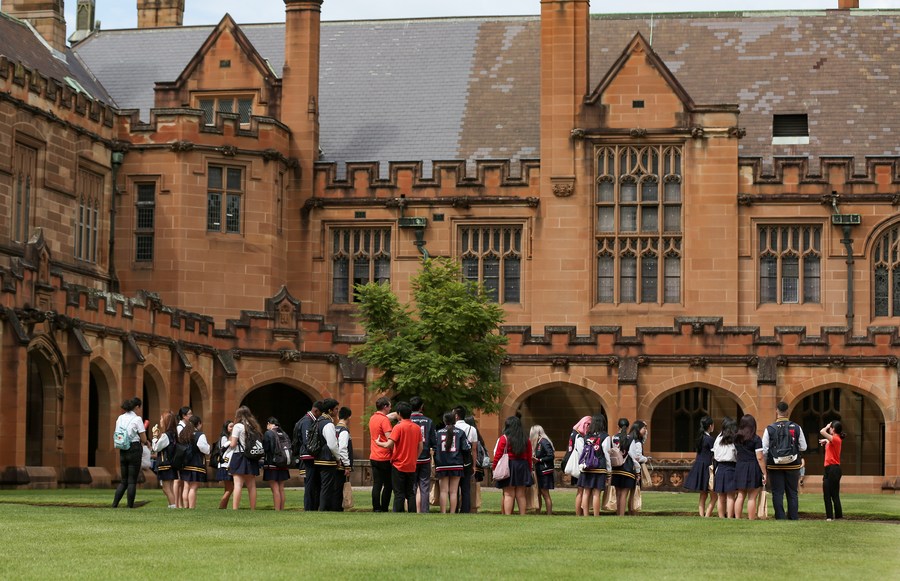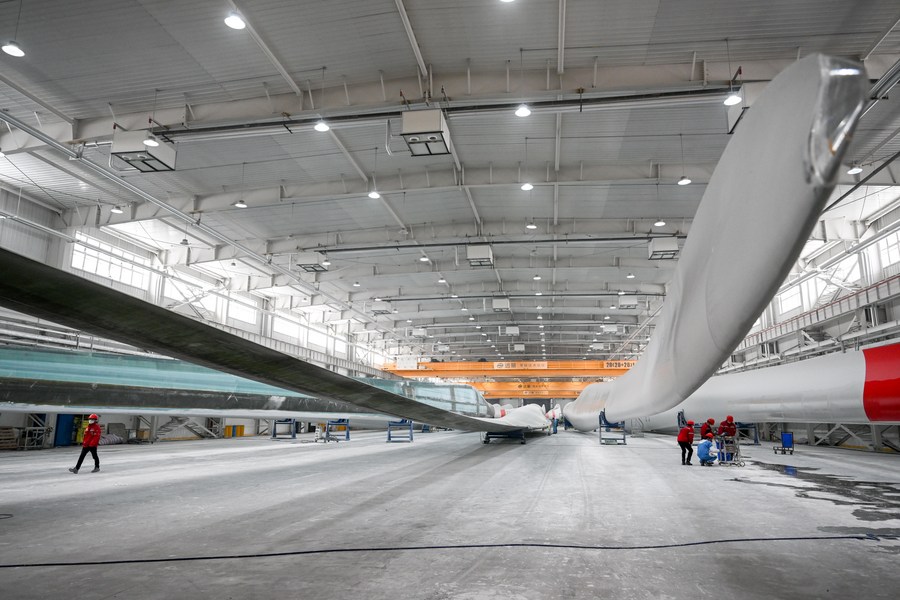Trade and Government Exchange on Track to Recovery amid Repairing of Beijing-Canberra Ties

The current China-Australia relations are showing a momentum of improvement and development, which serves the fundamental interests of the two countries and peoples.
On his personal Twitter account, Hazza Harding posts and shares almost all news related to China-Australia relations. Hailing from Queensland, the northeastern state of Australia, Hazza has a long connection with China, as he studied Chinese in high school and lived in Guangzhou, capital of Guangdong Province in south China, for 10 years as a TV presenter and musician.
Hazza has sometimes expressed disappointment and frustration as he has shared coverage of the low points in the relationship between the two countries, especially when the government of former Prime Minister Scott Morrison, who was in office from August 2018 to May 2022, took a provocative and confrontational stance toward China. However, optimism has returned to Hazza’s tweets, as relations between the two countries have warmed recently.
Trade as the sign
“A warming relationship with China has helped South Australia hit $17 billion worth of annual exports for the first time in the state’s history,” the Australian Associated Press reported on April 8.
The state’s Trade and Investment Minister Nick Champion was quoted as saying that South Australia’s export growth “outpaced neighboring states with a 24-percent increase for the 12 months to February.” It is China’s rising demand for iron ore and concentrates, refined copper and wheat that has fueled South Australia’s exports, according to him.
China’s imports from Australia have been increasing over the past few months. A promising sign is that China has resumed importing large quantities of Australian coal.

Data released by the General Administration of Customs of China on March 20 showed that China imported 207,000 tons of coal from Australia in February, an increase of about 20 percent year-on-year.
Coking coal is a key input for the steel industry. Australia used to account for a relatively large share of coking coal imports to China, but concerns over the strained bilateral relationship arising from the Morrison administration’s policies prompted many Chinese steelmakers to diversify their supplier base. As a result, the composition of China’s sources of coal supply has changed, with Indonesia, Russia and Mongolia becoming the most important ones in 2022.
Moreover, the Chinese Ministry of Commerce announced on April 11 that China and Australia had reached an agreement to resolve the barley dispute through friendly negotiations. In May 2020, China imposed a tariff of more than 80 percent on barley imports from Australia for five years as a result of anti-dumping and anti-subsidy investigations that began in 2018.
Visiting friends
“The China story is absolutely central to the Victorian story for more than 150 years. You can’t imagine the modern Victoria without the Chinese influence,” Daniel Andrews, Premier of the southeastern Australian state of Victoria, said in an interview with Hong Kong-based Phoenix TV after his four-day visit to China from March 27.
It was Andrews’ seventh trip to China and the first by an Australian state leader since the start of the COVID-19 pandemic and the signing of the Australia, United Kingdom and United States (AUKUS) partnership agreement to build nuclear-powered submarines, which has been strongly criticized by China.
There are currently around 42,000 Chinese students studying in universities across Victoria, according to the state government’s data. International students have always been one of Victoria’s biggest economic drivers, but the sector has taken a huge hit during the pandemic.

“Good friends can disagree. True friends do not disrespect though, and that’s always the approach that I’ve taken. You can have an honest dialogue, but it needs to be a respectful dialogue. We think the relationship and partnership with China is very important to Victoria and very important to Australia as well,” Andrews said.
After Andrews, Premier Mark McGowan of Australia’s largest state, Western Australia, began a five-day visit to China on April 17. He led a group of dozens of business representatives on a mission to strengthen trade ties with China. Between July 2021 and June 2022, Western Australia’s trade with China amounted to 143.6 billion Australian dollars ($96.2 billion), 53 percent of its total foreign trade.
Queensland Premier Annastacia Palaszczuk’s office recently also announced she was considering a trip to China in November to mark the 30th anniversary of the Queensland-Shanghai sister-state relationship.
“The visits of the officials to China demonstrate the strong desire of the country’s state governments to cooperate with China in areas such as trade and business, as well as the longstanding friendship between the two countries,” Li Jianjun, Director of the Australian Studies Center at Beijing Foreign Studies University and Secretary General of the Chinese Association for Australian Studies, told Beijing Review. “These visits can promote in-depth cooperation and people-to-people exchanges.” As Victoria, Western Australia and Queensland are all governed by the Australian Labor Party, which also governs at the federal level, Li believes their premiers’ visits will help stabilize China-Australia relationship.
Apart from officials, 15 Australian business leaders will travel to China from April 23 for a six-day visit to industrial and commercial centers in Hong Kong, Tianjin and Shenzhen, a tech hub in Guangdong. Their agenda will focus on discussing potential clean energy cooperation between Australian and Chinese companies, according to the Australian media.

Hope for rational development
On April 12, a political consultation between the foreign ministries of China and Australia took place in Canberra, with the participation of Chinese Vice Foreign Minister Ma Zhaoxu and Secretary of the Australian Department of Foreign Affairs and Trade Jan Adams.
During the meeting, Ma, who served as China’s ambassador to Australia from 2013 to 2016, stressed that the current China-Australia relations are showing a momentum of improvement and development, which serves the fundamental interests of the two countries and peoples.
“It is a good sign that both China and Australia are seeking to stabilize bilateral relations and resolve differences through diplomatic communication and dialogue. However, the process will inevitably be influenced by the China-U.S. relationship and also be disturbed by some forces hostile to China within Australia,” Li said.
Hazza returned to Australia in November 2022 to study for a master’s degree in international relations. He said he hopes to play his part in improving China-Australia relations, and have more opportunities to promote people-to-people and cultural exchanges, as “we can learn a lot from each other if we can learn to respect each other.”
“New developments in the Australia-China relationship have encouraged me, but I don’t want to set my expectations too high,” Hazza told Beijing Review. “I think both sides need to focus more on those friendly to each country and less on people with hawkish views in the future.”
In the context of escalating tensions between the U.S. and China, Hazza said it is difficult for Australia to maintain a balance in its relations with both countries. But if China-Australia relations continue to improve, perhaps Australia could play a mediating role if tensions continue to escalate, according to him. “Moreover, I think Australia is capable of doing so,” he added.
 Facebook
Facebook
 Twitter
Twitter
 Linkedin
Linkedin
 Google +
Google +










